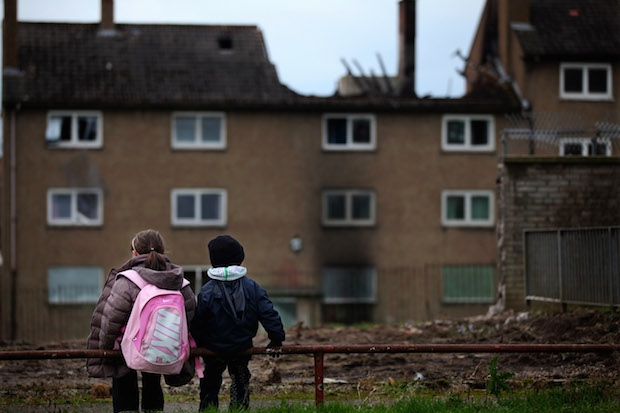Like most foreigners who move to Britain, I was struck when I first arrived by how much people worry about which school their children go to. Even couples who don’t have kids seem to fret about where to send them.
But now, working in the field of education reform, it makes sense to me. The disparity between a bad state school and a good one is huge, which in turn produces an enormous difference to the life chances of children attending them. It’s linked to money. To get into the good state schools here, you need to afford to live next to them. And if you live in a sink estate, the odds are that your children – no matter how bright – will be going to a sink school. This is the ‘catchment area’ system, and it ought to appal anyone who regards themself as a ‘progressive’.
Except, as we have heard in recent weeks, British ‘progressives’ are confusingly wedded to a regressive school system. Their dream seems to be a situation in which choice is obliterated entirely: let each child go to the nearest school! They talk as if school choice does not exist. But it always does – for those who can afford what recent reports put at £30,000 premiums on houses. Defend this system if you like, but let no one say these parents have not paid for their child’s education.
Of course, the same is true in other parts of the world with similar admissions systems. Indeed, the link between state school quality and house prices is one of the most consistent findings in economics. Parents are apparently willing to pay significant amounts of money for the privilege to live close to good state schools. And this is rational: what you learn dictates what you earn. The stakes are clearly sickeningly high.
So choice already exists in Britain. What reformers wish to do is to extend this choice to those who cannot afford to go private, or move to leafy areas. The idea is to weaken the link between postcode and school quality, because parents can live in one area and choose a school in another. Evidence suggests this works. For example, in England, researchers from the LSE have recently shown that high-quality, publicly funded schools for which proximity isn’t an important admissions criterion have no impact on house prices at all. Meanwhile, in Oslo, Norway, the abolishment of catchment areas induced the link between school quality and house prices at the sixth form level to decrease by over 50%. And in Paris, the existence of publicly-funded private schools breaks down the quality-house price relationship.
Why is this important? Because it indicates that school choice leads to more integrated communities. The British system, which Fiona Millar & Co seem so keen on, entrenches inequality by increasing house prices around good state schools and decreasing them around worse ones. The rich live with the rich, and the poor with the poor. School choice has the potential to break this pattern of social segregation. And this is precisely what recent American research suggests: with more choice decoupled from residence, house prices and average incomes decrease around more sought-after schools and increase around less sought-after ones. In other words, we see an equalisation among communities – school choice reduces residential segregation.
As I show in a recent research report, in which the above and many more relevant studies are discussed extensively, this also has implications for how we should view research on the link between school choice and school segregation. In fact, because it doesn’t take into account the beneficial impact of choice on residential integration, it’s dubious what it can actually tell us.
The enemies of school choice have a tendency to put equality and integration on a pedestal in most areas of society. If they were to look at the evidence, they’d find out that these goals are precisely what British school reformers are fighting for now.
Gabriel Heller Sahlgren is Director of Research at the Centre for Market Reform of Education at the Institute of Economic Affairs.






Comments